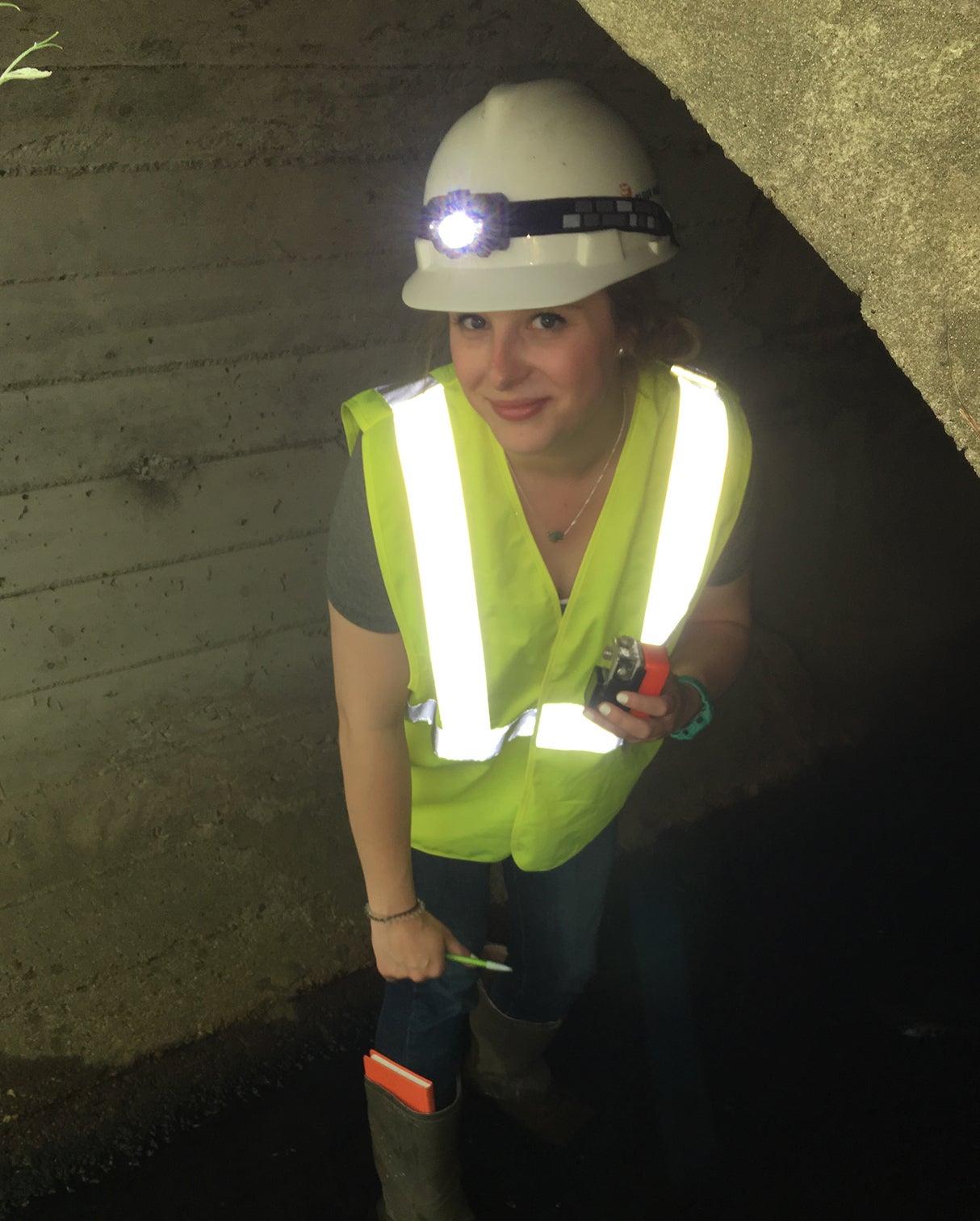KINGSTON, R.I., July 26, 2016—The New Bedford Hurricane Barrier is one of the biggest in the world, but will it protect the Massachusetts coast as sea levels rise?
No, according to a University of Rhode Island graduate student in engineering whose research paper on the issue won first place from the American Society of Civil Engineers.
Danielle Goudreau, 23, of Townsend, Mass., received the honor during the group’s Coasts, Oceans, Ports and Rivers Institute conference in New Orleans June 12 through June 15.
The paper, “Investigation of Combined Storm Surge Inundation and Sea Level Rise to the New Bedford Hurricane Barrier,’’ was among four papers nationwide selected to be presented at the conference. Participants voted to give Goudreau the top honor.
“I still can’t believe it,’’ says Goudreau. “It was an honor to be recognized for the research I’ve been doing. It also reflects on how much I’ve learned through my years as an engineering student at URI.’’
Goudreau is enrolled in URI’s five-year accelerated engineering program, which offers a bachelor’s and master’s degree in engineering. Goudreau is studying civil engineering and will graduate in August.
Located on the northwest side of Buzzards Bay, the New Bedford Hurricane Barrier stretches 9,100 feet across the Port of New Bedford to the shores of Fairhaven, Mass. It was built in 1962 to protect Fairhaven, Acushnet and New Bedford from coastal storms and hurricanes.
Using computer-based programs—Sea, Lake and Overland Surges from Hurricanes, or SLOSH, and Geographical Information System software, or GIS—Goudreau found that the barrier would not prevent flooding during intense storms with sea level rise. Damage to houses, businesses and roads could be significant.
Climate change will significantly affect the coastal communities of Massachusetts in the coming decades. Scientists project sea levels to rise 3 to 5 feet by 2100, and recent government projections are as high as 7 feet.
Goudreau determined that in a category 2 hurricane at high tide with no sea level rise the storm surge doesn’t go beyond the barrier. When a 4-foot sea level rise is factored in, the storm surge is dangerously close to the top of the barrier.
A category 3 hurricane with 4 feet of sea level rise “overtops’’ the barrier by a quarter foot, says Goudreau. Because the barrier is so long, flooding at the Port of New Bedford could be significant: Potential flow into the harbor could reach 1.6 million gallons every minute, Goudreau says.
“In the year 2100, my mapping indicates that the barrier overtops during a category 3 hurricane at mean sea level,’’ she says. “A storm scenario like this is possible within the next 100 years considering there were two large storms close to one another—in 1938 and 1955—that devastated the Port of New Bedford and neighboring towns.’’
During her research she also discovered that the online Massachusetts GIS mapping tool for hurricanes uses a 2-foot tide range for the entire coast, which is not representative of that area. In her studies, Goudreau used a 5-foot tide range; that range is more typical for the New Bedford region.
“Using that higher tide range resulted in much more flooding, even without sea level rise in the picture,’’ says Goudreau. “There were scenarios where my model predicted the barrier to be overtopped, and the online GIS mapping from Massachusetts did not.’’
Goudreau says her findings are especially important for Massachusetts because the state does not have a single source that provides an analysis of the impact of hurricane storm surges with predicted sea level rise.
“The results of my project indicate the importance of resiliency to be included in the design for new coastal stabilization structures,’’ says Goudreau. “While the next extreme storm event can’t be accurately predicted, the use of my model for the barrier indicates there are many storm scenarios that could cause major damage by overtopping the barrier.’’
Growing up in Townsend, Goudreau excelled in math and science in high school and chose URI to pursue an engineering degree involving coastal structures. She was also enticed by the five-year accelerated engineering program.
She singles out her internship with Pare Corp. in Foxboro, Mass., for providing practical experience in waterfront structure design and fieldwork throughout New England. Because of URI’s flexible program, she was able to work part-time while pursuing her master’s degree by taking classes at night on the Kingston and Narragansett bay campuses.
Her hard work paid off. Last month, Pare, a highly regarded civil engineering consulting firm with offices in Massachusetts and Rhode Island, hired her as a full-time engineer.
“The internship was crucial in helping me find a great job,’’ says Goudreau. “One of the best things about the accelerated program is that I was able to get on-the-job experience while also learning in the classroom. That’s so important in today’s tough job market.’’
Winning first place at the conference also opened doors.
“It was a great networking opportunity,’’ she says. “I couldn’t have done it without URI. I got an excellent education that has jump started my career in a big way.’’

